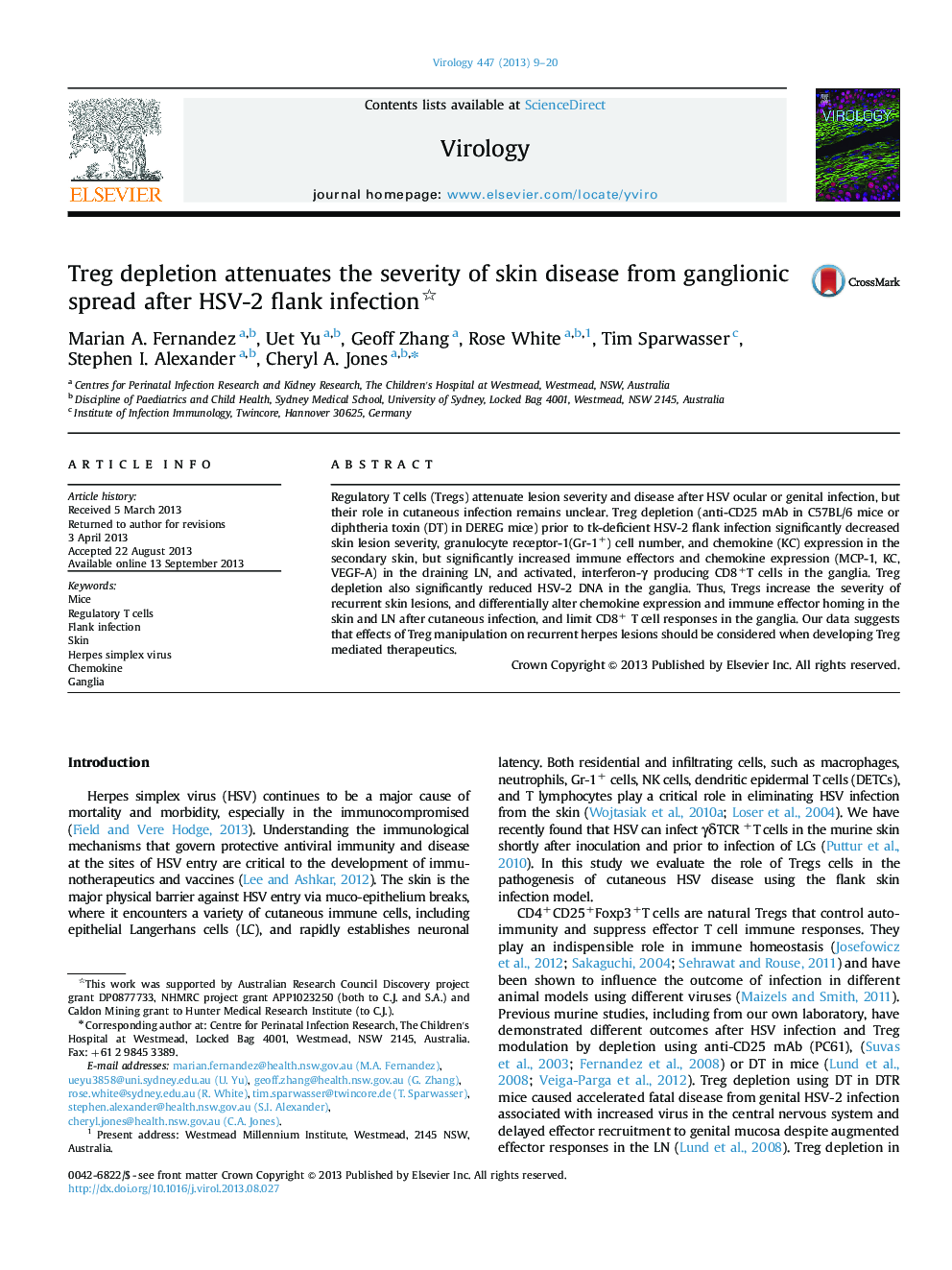| Article ID | Journal | Published Year | Pages | File Type |
|---|---|---|---|---|
| 6140476 | Virology | 2013 | 12 Pages |
â¢Treg depletion decreased skin disease and Gr1+cells at site of ganglionic spread from flank HSV-2.â¢HSV DNA was decreased and CD8+ cells increased in the ganglia in HSV-infected Treg depleted mice.â¢Tregs alter chemokine gradient between site of recurrent skin disease and draining LN after flank infection.
Regulatory T cells (Tregs) attenuate lesion severity and disease after HSV ocular or genital infection, but their role in cutaneous infection remains unclear. Treg depletion (anti-CD25 mAb in C57BL/6 mice or diphtheria toxin (DT) in DEREG mice) prior to tk-deficient HSV-2 flank infection significantly decreased skin lesion severity, granulocyte receptor-1(Gr-1+) cell number, and chemokine (KC) expression in the secondary skin, but significantly increased immune effectors and chemokine expression (MCP-1, KC, VEGF-A) in the draining LN, and activated, interferon-γ producing CD8+T cells in the ganglia. Treg depletion also significantly reduced HSV-2 DNA in the ganglia. Thus, Tregs increase the severity of recurrent skin lesions, and differentially alter chemokine expression and immune effector homing in the skin and LN after cutaneous infection, and limit CD8+ T cell responses in the ganglia. Our data suggests that effects of Treg manipulation on recurrent herpes lesions should be considered when developing Treg mediated therapeutics.
